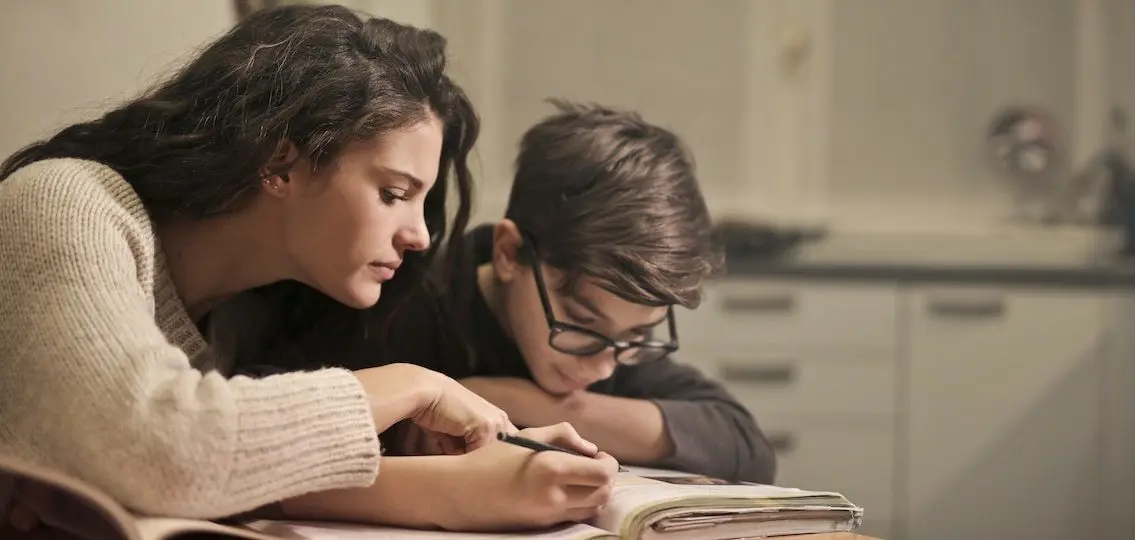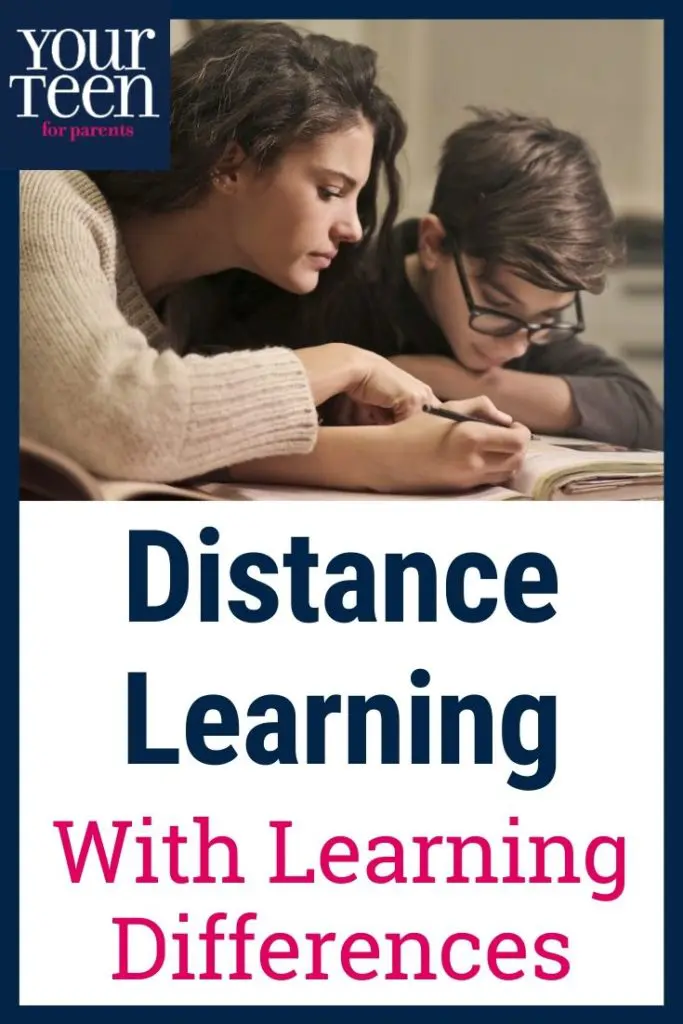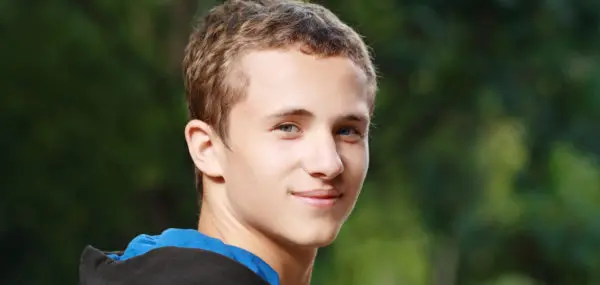Lawrence is the school of choice for students who learn differently. Their small class sizes and specialized instruction successfully prepare students with dyslexia, dyscalculia, dysgraphia and ADHD for college and beyond. They know that great minds don’t think alike. Kelly Christian is a psychologist and the director of the Shafer Center for Learning Differences at Lawrence School. She shared some great strategies for how to support students with learning differences with distance learning.
| [adrotate banner=”169″] |
Q: How can we create a productive environment for students?
Christian: Have a special space so you know that “this is where I do my reading or in my reading book,” or “I do my math at the kitchen table.” Have the tools you need accessible. Make sure that students have internet or hotspots, pens, pencils, calculators—everything they need right there in their space, so they don’t have to get up, leave the space, and become distracted along the way. And use this space day in and day out.
Q: What are the top three concerns that you see students struggling with right now in terms of this distance learning?
Christian: I’m coming across students who are experiencing a lot of academic fatigue. And I think that’s largely due to the fact that the adrenaline of the stay at home orders has really kind of worn off at this point. And now there’s just a lot of monotony with day in and day out school. There is also fatigue caused by having to learn on your own, since students with learning differences frequently thrive socially and enjoy their peers and school. They like that one on one contact with teachers and they’re just not getting it right now. So they’re not getting as energized and excited about school as they once were.
| [adrotate banner=”166″] |
The amount of screen time that’s required is also providing a lot of fatigue. I think back to something our Academic Technology coach told me. Don’t forget about 20-20-20 which is for every 20 minutes, you have to look away 20 feet for 20 seconds in order to reduce your eye strain and fatigue of looking at your Zoom meeting for as long as you are.
Third, students are just simply overwhelmed by the level of academics required of them at this point. As much as we can simplify the process of finding assignments, completing them, and turning them in, the better. Students who have time with a teacher at the beginning and end of the day are finding much more success right now with a stay at home order. They have a teacher that checks in with them at a particular time of the day to help them organize their daily agenda. And that might mean “Here’s what you’re doing for the morning versus after lunch,” and then they help that student problem solve any hiccups that they’ve encountered.
Q: How is it working at your school?
Christian: At Lawrence, students have check ins every single day with their advisor. Our lower school is doing a lot of direct instruction with live instruction. Meanwhile our upper school staff is recording lectures so they are available during the day for helping the students in individual meetings. And then they also come together in groups throughout the day as well, but that’s how they’re making themselves as available as possible to help these kids get around these obstacles.
Q: Do you have any suggestions for those parents whose kids might really be struggling?
Christian: If they haven’t done so already, those parents should have their child connect with at least one teacher. Students who are thriving right now in the distance learning generally were doing quite well before the distance learning, and one of the reasons why was because they were socially connected to teachers and staff. So the more you can have your students connected with a teacher, the better, because that teacher can then help your student self-advocate as needed, and they can also help the student navigate any new process that might be occurring.
In some public school settings, teachers may not be communicating with one another about how they are assigning work and how they are accepting work. So if you have multiple teachers accepting work in multiple ways, that can become really confusing for a student with a learning difference. Having an identified teacher would be helpful in this situation.
If a student has an IEP, they can contact their case manager for the IEP. That case manager is supposed to help the family and the student navigate this and how are they getting their intervention and accommodation goals met during this distance learning.
Q: We want them to be get into the habit of doing things on their own. But what if the student has a hard time reaching out to their teacher?
Christian: If they know why they have a learning difference, they’re much more capable of self-advocating. As a parent, the best place to start is with a simple “How can I help?” Because if you could just ask them this versus dictating and taking over, so you don’t enable them. You really want the students to try and problem solve.
If they are just so overwhelmed right now, they might say, “I need you to call Mrs. So-And-So because I can’t do it, and I don’t want to do it and I’m worried,” then you might have to take that step for them. If you feel like your student could do this, and they just simply need encouragement, then I would remind them of the many times they’ve been able to overcome obstacles prior to this and find a way to scaffold them reaching out to their person at the school, the best that you can for your particular child.
Q: What encouragement can you offer parents right now?
Christian: Parents need to remember to take the long view. I remind parents of this at our initial meeting, when I’m first diagnosing a child with a learning difference. I encourage them to think about what is their child going to be like in the future? And how do you want your relationship with that child to look in the future? And more importantly, right now, because so many of us are under chronic stress and there’s a lot of change all at once for everybody, it’s important to take a step back and really work on your relationship with your child.
The further we get away from school, the less any of this right now matters. What’s happening is just so incredibly heartbreaking for seniors because they are missing out on those social moments, not the math homework that piled up their senior year. So if you’re taking time to work on puzzles together, instead of math homework, please do it.
The other thing that I think is really valuable to think about is the rule — we call it the magic ratio — of one to five. John Gottman talks about how for every one negative interaction, we need five positive interactions in order to negate that one. Students with learning differences are bombarded by negative interactions: If you didn’t turn this in; you’re not answering fast enough; someone mumbling “What’s wrong with you? You’re stupid. Why aren’t you thinking of this right away.” They really need a tremendous amount of positive reinforcement and kudos for what they’re doing right now and doing well.

The more parents can try and make that a balance the better. Focus on what they’re doing really well right now. Call them out on how well they’re handling situations. Praise them for when they take a beat to relax and calm down when they’re stressed out. These are the things that are really going to be beneficial for children with learning differences, and parents will see a positive outcome from that.





